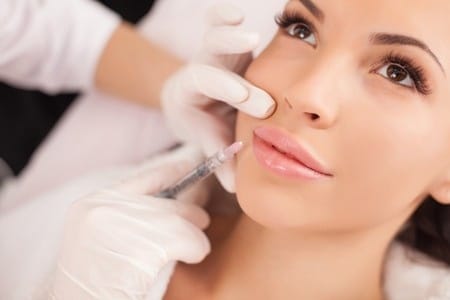 There seems to be one on every corner these days but all medspa’s are not created equal. Refinery29 recently published on article on everything you need to know before going choosing a medspa with some really great advice.
There seems to be one on every corner these days but all medspa’s are not created equal. Refinery29 recently published on article on everything you need to know before going choosing a medspa with some really great advice.
1. Heavily discounted procedures
We say this all the time…if it sounds too good to be true then it probably is. What is the catch and why are the prices so low? Finding a great deal on Groupon for a basic hair trim or manicure is one thing but doing the same when it comes to having Botox or filler injected into your face is another. Dirt-cheap injections are just a new level of risky.
Dr. Paul Frank is cited in the article as warning patients against buying treatments from third party websites. “The financial arrangement of [sites like] Groupon is such that they discount procedures so cheap, essentially the doctor is doing it for free. Now why would a doctor do it for free? Because they don’t have experience or patients,” he says. “Their expectation is that they’ll get on Groupon and do a bunch of cases for free in hope that patients come back or they tell their friends. It shows lack of experience and lack of professional conduct.”
Instead, look for discounts within a practice and utilize savings that way. It’s normal for practices to offer specials and not something people should be wary of, unless the prices are so low it again becomes something that sounds too good to be true.
2. Medical Credentials
The average person is not going to understand the differences between practitioners and the few letters behind their names. But it’s extremely important to do your research and not just accept that someone is experienced and qualified based on their marketing. And even though the word “spa” sounds like simple relaxing procedures, it’s still a doctor’s office.
“First and foremost, you need to know that there is a doctor who oversees, owns, and runs the place. Ideally, you want a physician who has a board certification in some sort of medical specialty, so plastic surgery or dermatology,” says Dr. Frank. “If the doctor in charge of the medical spa is a dentist, anesthesiologist, or in any field that doesn’t directly relate to the treatments on the menu, it’s a pretty clear sign that you should look elsewhere.”
“A lot of doctors and OB/GYNSs are trying to get certified in fillers because it’s an opportunity for them to make more money, and I don’t agree with that,” said Dr. Nassif, “Only professionals related to the plastic surgery field should be doing these things.”
3. Services and who is providing them
Most medical spa procedures are done by aestheticians who are trained and credentialed to be doing them. Injectables are often done by nurses, nurse practioners, and physician’s assistants. Those are considered medical procedures that are more serious so do your research on who they are trained under and see some of their before and after photos first.
4. The consultation process
Be wary of places that are super pushy or require extensive contracts. When trusting someone with your face, it should be someone you trust who has fully answered all of your questions to a point you are comfortable moving forward.
5. Before and after photos
Before and after photos of other patients are not only important to look at beforehand, but also getting before and after photos of your own treatments so the person treating you can show you the changes, or lack of, that are happening with your treatments.
6. Patient Reviews
Both doctors agreed that Yelp reviews should be taken with a grain of salt, unless there are multiple one-star reviews. But look on other sites, such as RealSelf, and ask to speak with actual patients of the doctor so you can hear about some experiences first-hand.
7. The actual appointment
When getting a filler treatment, make sure you see the nurse or doctor open a fresh syringe and see that it’s FDA approved hyaluronic acid inside the package. Sharing filler syringes between patients comes with a high risk of contamination, which can cause massive reactions. Using the same vial of Botox is okay, as long as a sterile syringe is used to draw liquid from the bottle.
8. Follow-up
You should always be given the opportunity for a follow up, whether you need one or not. “Before you leave, you have to make sure you were given the means to contact someone should there be a problem,” says Dr. Frank. ”
Click HERE for the full article.
